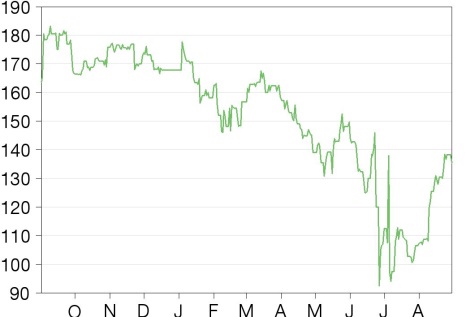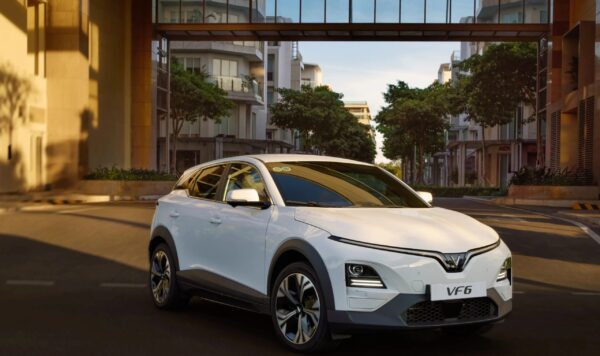The UK motor retail sub-sector was re-rated over the two years to spring 2014, with all companies substantially outperforming the FTSE All-Share Index. An extended period of consolidation ended earlier this year, with share prices drifting backwards, initially reflecting fears about consumer spending trends. More recently, the market took an adverse view of Brexit, with concerns about the new car market, especially the likely impact of sterling weakness on new car prices.
We have, for some time, espoused the view that the market underrates motor dealerships – fears about the maturity of the market, the low margins and the perceived volatility of new car sales have taken precedence over the opportunities inherent in a fragmented franchise market, an active used car market and the consistent quality of aftermarket earnings. Trading performances in recent years bear out the ability of a quality management team to respond to this opportunity. The quoted dealership groups have delivered consistent profits growth over the past five years and are all on course to deliver record profits again in the current year. This belies the fact that, while the new car market was at record levels last year and is running slightly ahead in 2016, registration figures are only nominally above the previous record level in 2003.
New car market
SMMT figures for the first six months of 2016 show new car registrations up by 3.9% to 1.42m vehicles. This improvement conceals a continued more challenging trading environment, with a switch towards fleet purchases outpacing a modest 1.9% rise in private registrations. The latest SMMT UK forecast for the full year still suggests a small year-on-year increase in registrations to 2.70m, but was published prior to the Brexit vote. Several industry participants have indicated a modest reduction in their targets, suggesting that registrations may still rise year-on-year, but the final figure may be closer to the 2.63m registered in 2015.
UK motor retailers have, in recent years, benefited from weak markets across much of Europe, with the global OEMs fighting for share in one of the continent’s few growing markets. Support from the OEMs continues, despite last year’s useful recovery in several European markets. There remains substantial global manufacturing overcapacity, with few OEMs showing signs of reducing production levels. The recent weakness of sterling relative to the euro will have eaten into OEM gross margins but so far there seems little pressure for price rises; most industry estimates for 2017 still suggest a small rise in new car volumes. Both Ford and PSA have indicated a desire for small price rises, but PCP terms appear not to have been affected.
The level of customer monthly payments is a key factor in vehicle purchase decisions. The progressive reduction in interest rates and the support from OEMs means that payments are close to, or below, the levels of five years ago. This has led to natural fears about rising interest rates – a 0.5% rate rise would typically add up to £3 (2%) to the monthly payment on a standard small car. We believe that increased affordability has led to sustained demand for new cars and a steady increase in switching to higher specification or shifting allegiance to premium brands. The built-in trading pattern related to the length of PCP contracts suggests to us that growing numbers of consumers are enjoying the benefits of driving a new car. This should at least help to sustain new car volumes at around current levels; if the consumer climate does become more challenging, we would look for a shift back towards lower specification vehicles, rather than a drop in new car sales.
There has been much comment about the possible impact of Brexit, as indicated by the under performance of the sector since the result of the referendum. The vast majority of new cars sold in the UK are imported, mostly from Europe and the Far East. Similarly, the majority of UK output is exported – OEM plants build for global distribution. The UK is the second largest European market and one of the most important export markets for both German and French manufacturers. It is illogical to think that EU politicians will do anything to undermine their key export markets. From the point of view of retailers, cars will continue to be sold in very large numbers in the UK; if some OEMs benefit at the expense of others the major groups, such as Lookers, represent all major OEMs and should be able to react quickly and effectively to the changes.
Used car market
The size of the UK used car market rose modestly last year to 7.2m (7.0m) vehicles (source: Experian), after being fairly static at 6.7/6.8m vehicles over the previous five years; the first half of 2016 is reported by SMMT to have seen the biggest rise (7.9%) in the used car market for many years . The franchised dealer network has historically concentrated on vehicles up to three years old, although this has been steadily extending to up to five years old in recent years. Looking at the overall parc of some 33m vehicles, we estimate that the franchised dealers are targeting a market involving some 3.5m transactions. Progressive reductions in new car sales during the post-banking crisis period led to reduced availability of suitable used cars and firm used car prices. The subsequent recovery in new car sales has reversed that trend, but the consequent increasing availability of vehicles has been absorbed by the market, with only a limited impact on margins. We sense that the growth in OEM backed PCPs in the used car market has been a key factor. They have been a growing feature of the premium brands for some time, but are now gaining traction in the volume sector; PCPs now represent some 40% of the financing of the market for vehicles up to three years old.
Over the past five years, the major motor dealership groups have consistently gained share in the used car market at the expense of the independents. This reflects more effective investment in inventory profiles, more efficient sourcing of quality used cars, and significant investment in marketing, especially on the internet. Whereas five years ago, a typical buyer of a used car would visit up to six showrooms before making a decision to acquire a particular vehicle, today’s buyer will undertake considerable research across a number of websites and subsequently visit no more than two showrooms before making a choice. The larger groups are able to spread the cost of website development over a wider number of outlets; they are consistently investing in facilities and improving customer interface. The feedback from the leading groups is that used car gross margins continue to be largely sustained; Lookers has raised unit sales of used cars by 55% over the past four years in a market that has grown by around 5%.
Aftermarket
A similar story applies to aftermarket operations. Dealership groups had to contend with the reducing numbers of vehicles up to three years old, while quality improvements reduced levels of warranty work; then came the recovery in registrations. The leading groups gained market share, by offering free vehicle health checks and targeting vehicles with a wider age profile, through a combination of direct marketing (citing the increased complexity of vehicles) and selling service plans on used car sales. Older vehicles require more work per visit, accentuating the benefits of the strategy. We expect these trends to continue over the medium term and, with the size of the new to five-year old vehicle parc steadily increasing again, the outlook remains encouraging.
The current dynamics of the industry continue to favour the large, multi-franchise distributor. We have mentioned the benefits of website development. In addition, their financial strength enables them to invest in modern, more effective facilities and to take on special buying opportunities when OEMs are temporarily over-stocked with either new vehicles or PCP returns. In addition, they can spread the cost of investment in sophisticated customer management systems and handle the regulatory demands related to financial vehicle purchase schemes.















